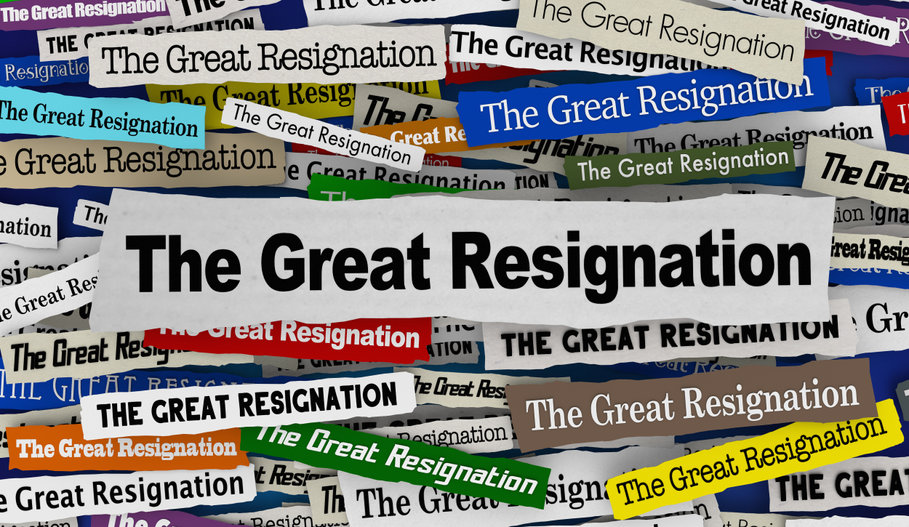
According to the U.S. Department of Labor, during the months of April, May and June of 2021, 11.5 million workers quit their jobs. The term “Great Resignation” began popping up everywhere and still fills headlines today. As the mass fluctuation of employment continues in 2022, its impact is seen in businesses of every size and industry. As such, there’s a natural trickle-down effect to the marketing department.
Defining the “Great Resignation”
Anthony Klotz, a psychologist and an associate professor of management at Texas A&M University, first used the phrase “Great Resignation” when he predicted the onset of the shrinking workforce. The pandemic resulted in changes to the employment status of millions of workers, not to mention the redefining of roles and working conditions. In some cases, this caused increased workloads and burnout. Layoffs and closures contributed to a large portion of employment changes. Additionally, many individuals were looking to forge their own paths, seeking income streams outside the traditional workplace environment.
Employees between 30 and 45 years old have had the greatest increase in resignation rates. The healthcare, technology and service industries were particularly hard hit, but most industries were affected in one way or another. Between ongoing concerns about COVID-19, the aid of unemployment and stimulus money and a desire for remote work, many Americans simply aren’t returning to their previous jobs.
The Stress on Marketing

In a survey by MarketHire, which polled more than 25,000 marketing professionals, 75 percent agreed that marketing in particular likely has “a wave of resignations coming.” Further, the same study revealed that 48 percent of polled marketing professionals were personally planning on leaving their jobs. What can companies do to relieve the stress, adapt to a changing workforce and still deliver on their department’s goals? Here are three suggestions to consider:
- Tap into the growing numbers of freelancers and outsourced experts. For some, the need to quit their job came from new responsibilities at home or simply being the right time to retire or start a family. The desire to keep working didn’t change for others, but how they worked did. For companies that didn’t transition to remote options or offer support to transition back, many employees decided to take matters into their own hands and begin their own freelance work. As this trend became the new normal, working with third-party vendors has become a viable option for marketing executives. In fact, according to the MarketHire survey, 80 percent of respondents said they had worked with a freelance marketer recently. Sixty-three percent reported working with at least one in the past six months. Marketing leaders who recently worked with freelancers estimated that they outsource nearly half of all marketing work to them. This increase allows companies that do not have the internal resources they need to achieve their marketing goals, without getting distracted from their primary business functions.
- Consider transitioning into more specialized areas. In 2021, 68 percent of business leaders said they’d struggled to hire an in-house marketer. Sixty-seven percent think hiring will only get harder with time. Many firms aren’t returning to full-scale operations right away. Some are simply choosing to refocus on specific industries or narrow their product or service offerings. This may reduce the revenue, costs and profit of organizations. It also enables marketers to become more effective, efficient and productive at what they do best.
- Make attracting and retaining talent a renewed priority. A clear impact of the “Great Resignation” is a renewed understanding of quality talent. If a company didn’t already have strategies for employee retention and attracting new hires, it probably does now. To garner much-needed new employees, companies are offering hiring incentives like never before. To retain the employees who are still there, many companies are incentivizing loyalty through employee appreciation, by fostering a company culture of gratitude and support and embracing the flexibility that many employees need right now. Use your company mission as a guiding light to ensure employees old and new know the work they do matters.
A Time of Flux

While the “Great Resignation” has a chilling ring to it, what we’re really seeing is the natural fluctuation of the business world returning to a state of a new normal after a crisis. Sure, there are challenges to address, changes to make and leadership required, but with eyes wide open and a strategic perspective, the workforce will come back stronger than ever.
